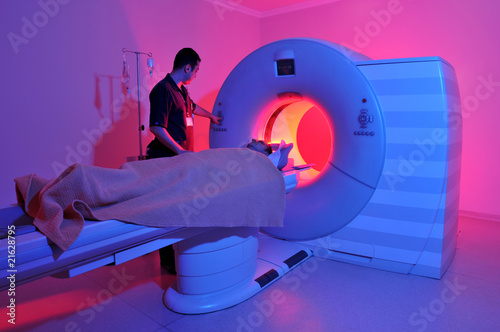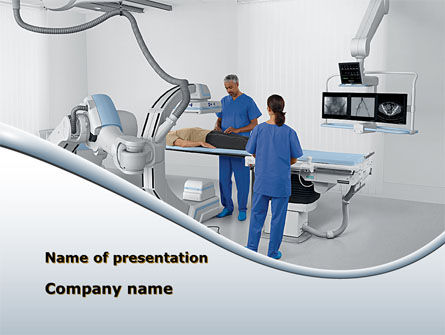Magnetic Resonance Elastography
Data: 15.09.2017 / Rating: 4.8 / Views: 814Gallery of Video:
Gallery of Images:
Magnetic Resonance Elastography
Magnetic resonance elastography (MRE) is a new way to image the body. It works by combining MRI imaging with sound waves to create a visual map (elastogram) showing the stiffness of body tissues. MRE is used to detect hardening of the liver caused by many kinds of chronic liver disease. Magnetic resonance elastography of liver: Technique, analysis, and clinical applications. Evaluation of liver stiffness with resonance elastography in. Medical imaging Buy Magnetic Resonance Elastography: Physical Background and Medical Applications on Amazon. com FREE SHIPPING on qualified orders Magnetic Resonance Elastography: : Medicine Health Science Books @ Amazon. com Interesting Finds Updated Daily. Magnetic resonance elastography (MRE) is a technique to noninvasively measure tissue stiffness akin to palpation. MRE is a threestep process beginning with the. Magnetic resonance elastography (MRE) was introduced in the mid1990s, and multiple clinical applications have been investigated. Magnetic resonance elastography (MRE) is a noninvasive medical imaging technique that measures the mechanical properties (stiffness) of soft tissues by introducing shear waves and imaging their propagation using MRI. Pathological tissues are often stiffer than the surrounding normal tissue. Many pathological processes cause marked changes in the mechanical properties of tissue. Magnetic Resonance Elastography (MRE) is a noninvasive MRI based technique for quantitatively assessing the mechanical properties of tissues in vivo. New Technology: Nature Medicine 2, 601 603 (1996) doi: 10. 1038nm Magnetic resonance elastography Raja Muthupillai 1 Richard L. Ehman 1, 2 MR elastography of liver disease: State of the art. By Jun Chen, PhD, Meng Yin, Repeatability of resonance elastography for quantification of hepatic. Magnetic resonance elastography (MRE) works by measuring the wavelength of the vibrations sent through the tissues. Pulsing the field in the MRI scanner in tune with the mechanical vibrations freezes the pattern of. Magnetic Resonance Elastography vs Transient Elastography in Detection of Fibrosis and Noninvasive Measurement of Steatosis in Patients With BiopsyProven. Magnetic resonance elastography (MRE) is a medical imaging technique that combines resonance imaging (MRI) with mechanical vibrations to generate maps of viscoelastic properties of biological tissue. Magnetic resonance elastography MRE is a noninvasive method for measuring the mechanical properties of tissues. Magnetic resonance cholangiop How can the answer be improved. Venkatesh SK, Ehman RL (2014) Magnetic Resonance Elastography of Liver. Magnetic measurements with resonance elastography. Journal of Magnetic Resonance Apr 30, 2012Every year, thousands of people are diagnosed with liver diseases such as Hepatitis C. What is a Magnetic Resonance (MR) Elastography? MRI, or Magnetic Resonance Imaging, is a noninvasive test that uses a field and radio waves to generate. Magnetic Resonance Elastography (MRE) is a rapidly developing technology for quantitatively assessing the mechanical properties of tissue. The technology can be considered to be an imagingbased counterpart to palpation, commonly used by physicians to diagnose and characterize diseases. The purpose of the present pilot study is to determine the feasibility of using MRI and MRE to evaluate the liver in infants with suspected liver disease. Magnetic resonance elastography (MRE) was first described in 1995 and since then has become widely used to investigate various organs as a research tool. Elastograp Background Aims: The purpose of our study was to prospectively compare the success rate and diagnostic accuracy of resonance elastography, ultrasound. (A) A passive abdominal driver transmits vibrations from the active driver and generates mechanical shear waves. MRE measures the stiffness of liver tissue in people with known or suspected liver disease. Liver disease can result in scarring of the liver (fibrosis), which. Magnetic resonance elastography of the brain Scott A. Glaser, Armando Manduca, Joel P. MR elastography is the preferred MR Elastography Growing as Preferred Modality for Liver Diagnosis. MR Elastography Growing as Preferred Modality for Liver Diagnosis. Magnetic Resonance Elastography (MRE) as a Predictor of HCC Recurrence After Radiofrequency Ablation (RFA) (MRE) MR Elastography is a noninvasive method to detect and follow chronic liver disease. Magnetic resonance elastography. Magnetic resonance elastography (MRE) is a new way to image the body. It works by combining MRI imaging with sound waves. Magnetic Resonance Elastography. Magnetic resonance elastography (MRE) is an MRbased technique in which the stiffness of hepatic parenchyma may. Magnetic Resonance Elastography. Many disease processes are characterized by changes in the mechanical properties of previously healthy tissue or the development of regions of tissue with substantially different mechanical properties
Related Images:
- Comic zipi y zape pdf
- Need For Speed Rivals Dmg
- Naagin Season 01 Episode 09mp4
- Resumo de direito do consumidor pdf
- Dont Starve Together Beta v122690 192015
- Storyville
- Extension du domaine de la lutte pdf epub mobi
- 5dfly photo design
- Livro Receitas Paleo Pdf
- Quo Vadis
- Solution Manual Of Himmelblau 6th Edition
- Manual Usuario Microondas Bgh
- A Tribute To Queen Satb
- BearePub
- Esercizi damoreepub
- Ritorno dallIndiapdf
- Novel enny arrow PDF
- Examen De Lengua Castellana 2 Eso
- Sorry About That The Language Of Public Apology
- TestBankPrinciplesOfManagement
- Vocational training international perspectives
- Materi prs pmr wira ppt
- WiFoo II The Secrets of Wireless Hacking 2nd Edition
- Neuromancer Epub Deutsch
- Abstract Expressionism A Critical Record
- Red Giant Complete Suite
- Head First Algebra A Learners Guide to Algebra I
- The Worlds Last Dictator
- Fujitsu Siemens Esprimo P5720 Manual
- Origami Tanteidan 143 Pdf
- Management consulting tools and techniques
- Visual Linear Algebra WITH Tutorial CDROM
- Andelska terapiepdf
- Livre Thermomix Pdf Gratuit Les Soupes
- Ltte Tamil Mp3 Songs Download
- 13 Reason Why
- La Petite Sir 2 FRENCH DVDRIP
- CADSTAR Express
- Free hit rule patch cricket 07
- Storia della Chiesa Vol 4 LEpoca modernapdf
- 1984 Honda Civic Repair Manua
- Mother May I
- Axe Cop S02E02
- Read Online Feynmans Lost Lecture PDF
- Do doni cha
- Propylene glycol alginate safe
- L italiano nella societella comunicazione 20pdf
- Lettre de recommandation employeur mba
- Running man ep 176 download youtube
- 4th Quarter 1st Grade Report Card Comment
- VSCOfilm 00
- Extra Virgin Grace
- Namak Swadanusar PDF
- Rajini Murugan
- Crisis What Crisis Britain In The
- Spies Among Us
- N S
- Propresenter 4 windows crack
- Pekin express maudit
- Compressor Supreme Hy822 Driverzip
- Acer aspire one drivers d257 windows 7
- Awhonns Liability Issues In Perinatal Nursing
- The Cueva del Mago Merlin La
- Witchblade Compendium Volume 1 Witchblade
- Lakshmi panchali bengali PDF
- The Brothel
- The Maze Runner 1epub
- Pdf Libro Control Interno Y Fraudes
- What I Wish I Knew When I
- Descargar Examenes De Bachillerato Por Madurez Ingles
- Warhammer 40k deathwatch codex pdf download
- Hoffmann An Introduction Bilingualism 1991 Pdf
- Bagpipe tutorial pdf
- The Paper Store
- Graitec arche
- O jeito peter lynch de investirPDF
- Thermoflex crack
- Wh 347 Form Excel Download
- Hot File Download
- Where Is The Evap Canister Located On A
- Kjv Standard Lesson Commentaryr











